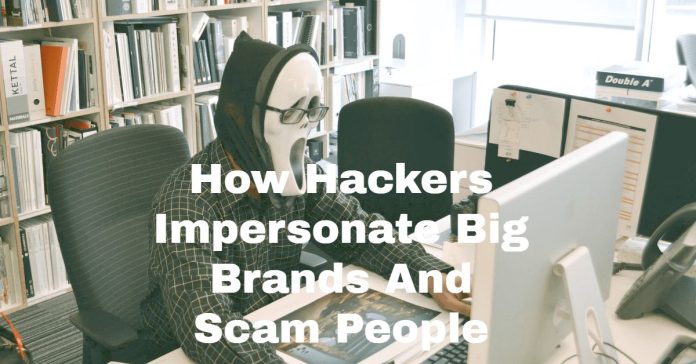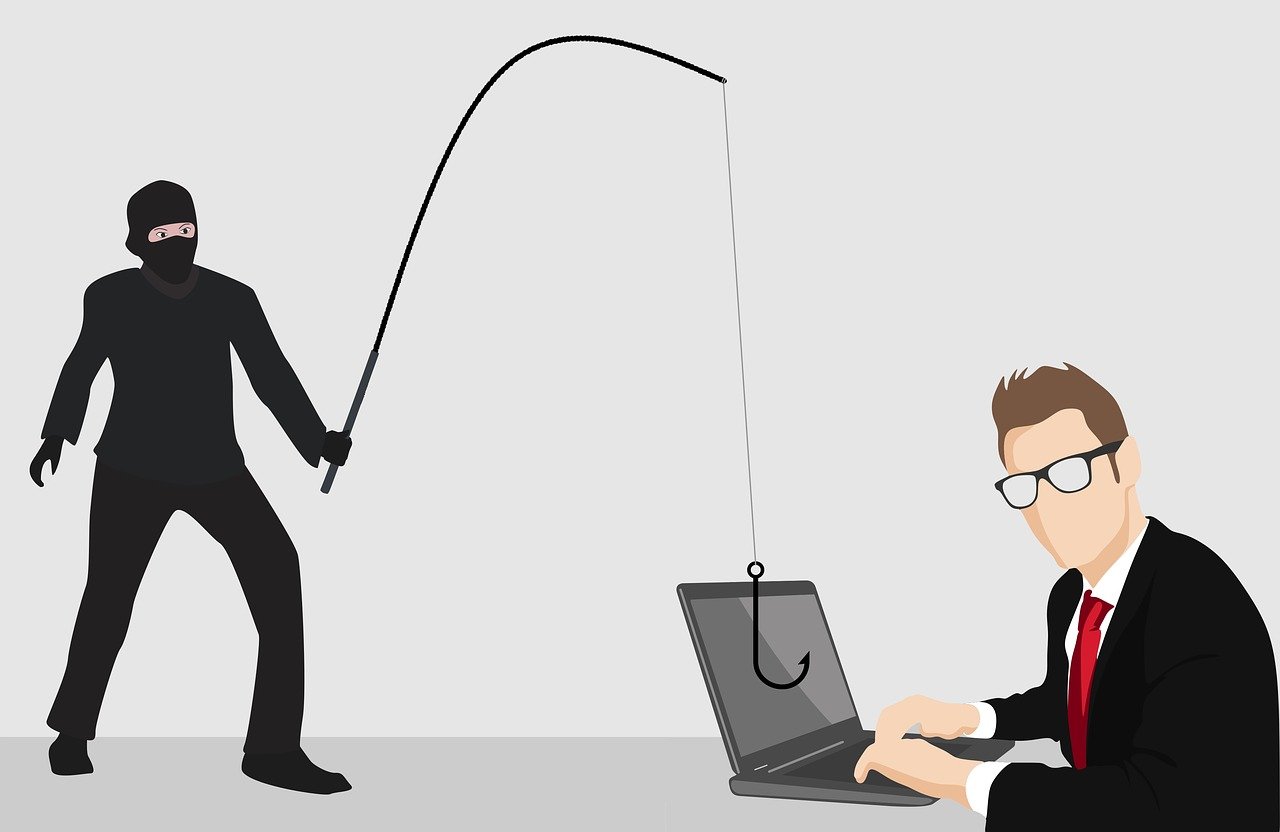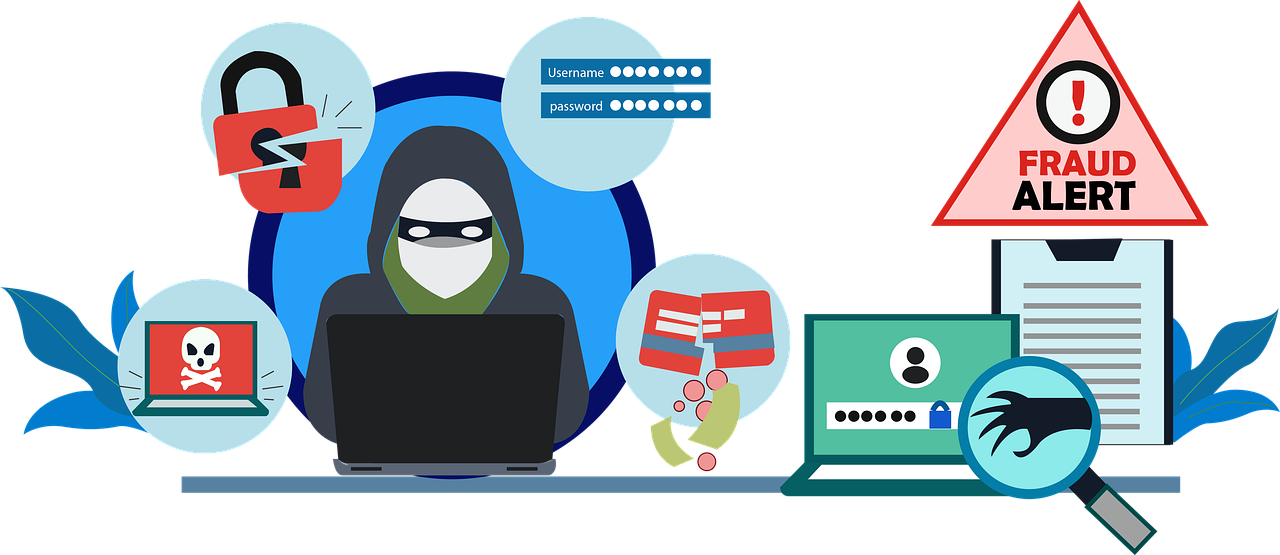This post will show how hackers impersonate big brands and scam people.
When you receive an email saying that it is from a company that you do business with, it features the company’s logo. It appears professional; you may trust it, especially from a reputable business.
Unfortunately, hackers know this and piggyback reputable brands to try to accomplish their nefarious objectives.
READ ALSO: Best Protection Tools Against Hackers
Here is what you need to know about impersonation and phishing – and how to protect yourself.
Table of Contents
Phishing Explained
They were wondering how hackers impersonate big brands. Phishing is the most common way for criminals to gain entry into networks. This is because it is one of the easiest and cheapest cybercrimes to commit.
If successful, the criminal can potentially gain valuable information from their targets. Scammers use phishing to try to obtain the following from people and businesses:
- Money and other monetary benefits
- Login credentials
- Financial data
- Identities
Most phishing attacks are carried out over email, but some occur on social media or other platforms.
In a typical phishing scam, the criminal tries to get the victim to take a specific action, such as providing login information, updating their account, or making a payment.
The victims may be asked to click on a link, download an attachment with malware, or respond directly with the information.
READ ALSO: What Next After Being Scammed Online?
The Brands That Hackers Impersonate
Statistics on identity theft indicate that hackers like to impersonate reputable companies. The more trustworthy the impersonated business, the more its customers may be able to give the scammers what they want.
Additionally, the statistics on identity theft clearly show that it is on the rise. Yet, there is still not a very clear solution to it, nor enough coverage about this issue.
According to a Vade Secure analysis of recent phishing attacks, the most popular brands hackers are impersonating include:
- Microsoft – Microsoft remains the most prominent brand hackers use in phishing attacks. In a year-over-year comparison, there are 15.5% more URLs in emails claiming to come from Microsoft. Microsoft is appealing to hackers who may use Office 365 accounts to view and steal restricted files in larger-scale attacks or use a legitimate address to access other accounts.
- Netflix – Netflix’s recent price adjustment gave hackers a new opportunity to spoof customers.
- PayPal is the most widely used global online payment service and is a trusted brand, two characteristics that make it particularly attractive to hackers.
- Bank of America – Banks are often an attractive target to hackers because of the quick financial payoff.
- Chase – 9 out of 25 brands in the full report, including Chase, come from the financial industry.
- DHL – This global logistics firm realized an increase of 24.5% in phishing attacks.
- Facebook – Fake URLs listing Facebook as their source increased by 176% in a year. Hackers who get login credentials from Facebook could obtain additional information that may be used in other attacks.
- DocuSign – Electronic document service company DocuSign made the top ten list. This account could allow hackers access to critical financial documents and data.
- LinkedIn – LinkedIn experienced an increase of 15.8% in phishing attacks.
- Dropbox – A document storage company rounded out the tenth position.
Other reputable companies also find themselves targets for these phishing campaigns. For example, Amazon experienced an increase of more than 400% in phishing emails citing the conglomerate.
According to Barracuda researchers, Google brand sites make up 4% of spear-phishing attacks in 2020.
Apple also experienced a significant number of attacks.
Not only that, but many big corporations also suffer from data breaches, the most famous being Amazon’s. Hence, this should not be taken lightly.
READ ALSO: How To Secure And Protect A Website [We Asked 38 Experts]
How Hackers Impersonate Big Brands
Some signs that you are receiving a phishing message include:
- Denied access – Many phishing scams purport to tell you that you cannot access your account if you do not update it. Others may say that fraudulent activity was detected on your account and may urge you to provide new login credentials.
- Mismatched email address or URL – The sender’s email address or the URL where you are redirected may differ slightly from the one you have received from the company before.
- Poor spelling or grammar – The message may contain spelling or grammar errors since many of these attacks are carried out by people who speak different languages.
- Urgency in the content – Hackers may try to bypass your better judgment by claiming that you must take action NOW.
- Too good to be true messaging – If you receive a message congratulating you for winning a prize or lottery, you should be very hesitant.
How To Protect Yourself From Phishing
The FTC recommends taking the following steps to protect yourself from phishing scams:
- Install and regularly update security software
- Set up your mobile phone to update automatically since many attacks target mobile devices
- Use multi-factor authentication to protect your accounts
- Back up your data regularly
If you run a business, you will want to take extra precautions to safeguard your corporate accounts and customer data, including:
- Providing ongoing training to your workers to spot and avoid phishing attacks
- Disabling macros from being run on your business computers
- Restricting access to confidential information to only those workers who need it
READ ALSO: Popular Types Of Cybercrimes
How Hackers Impersonate Big Brands: Frequently Asked Questions
Why do hackers impersonate big brands?
Their main goal is identity theft and financial gain. By impersonating trusted brands, hackers leverage the brand's reputation and familiarity to:
- Steal login credentials trick victims into entering usernames and passwords on fake login pages that appear legitimate.
- Deploy malware: They lure victims into clicking on infected links or downloading attachments that contain malware, giving hackers access to their devices and data.
- Commit financial fraud: They exploit stolen information like credit card details or bank account numbers to make unauthorized transactions.
How do hackers impersonate big brands?
They employ various tactics to make their scams appear genuine:
- Phishing emails: These emails appear to be from the brand, often with urgent demands or tempting offers. They might contain typos, grammatical errors, or a sender address that doesn't quite match the brand's official email format.
- Spoofed phone calls: Hackers can use technology to make caller ID appear as the brand's contact number, tricking victims into picking up and potentially revealing sensitive information.
- Fake social media accounts: Hackers might create fake social media profiles imitating the brand, often with slightly altered usernames or logos. They may attempt to connect with victims and send them direct messages containing malicious links or requests for personal information.
- Malicious websites: Hackers can create websites that closely resemble the brand's official website, using similar layouts, logos, and even stolen content. These websites often trick victims into entering their login credentials or downloading malware.
What are some red flags to watch out for?
- Sense of urgency: Emails or messages demanding immediate action, like threats of account suspension or promising unrealistic rewards, are often used to create panic and prevent victims from thinking critically.
- Grammatical errors and inconsistencies: Legitimate companies typically maintain high standards for professionalism. Typos, grammatical errors, or inconsistencies in email addresses, website URLs, or branding are red flags.
- Suspicious requests for personal information: Reputable companies rarely request sensitive information through email or unexpected phone calls. Be wary of any requests for passwords, credit card details, or Social Security numbers.
- Unfamiliar links or attachments: Never click on links or open attachments in emails or messages from unknown senders, even if they appear to be from a familiar brand.
How can I protect myself from being impersonated?
- Be cautious with unsolicited communication: Don't click on links or open attachments in emails or messages from unknown senders, even if they appear legitimate.
- Verify the source: If you receive a message from a brand, contact them through their official website or verified social media channels to confirm its authenticity before taking any action.
- Enable two-factor authentication (2FA): This adds an extra layer of security to your online accounts, requiring a secondary verification code beyond your password when logging in from a new device.
- Keep your software updated: Regularly update your operating system, web browser, and other software to ensure you have the latest security patches and bug fixes.
- Use strong and unique passwords: Avoid using the same password for multiple accounts, and create strong passwords using a combination of uppercase and lowercase letters, numbers, and symbols.
READ ALSO: Identity Theft: How To Safeguard Your Personal Information
What to do if you suspect you've been targeted?
- Don't respond to the sender.
- Change your passwords immediately: If you've entered any information on a suspicious website or shared your log in credentials, change your passwords for all associated accounts.
- Report the incident: Report the fraudulent attempt to the brand directly and consider reporting it to relevant authorities, depending on the nature of the impersonation attempt.
What To Do If You’ve Been Catfished?
If you think you were a victim of this attack and may have given out your personal information, go to IdentityTheft.gov and follow the steps. Also, update your computer’s security software if you accidentally downloaded malware.
READ ALSO: 7 Odd Signs That Your Website Has Been Hacked
Conclusion
In this post, we've shown you how hackers impersonate big brands and scam people.
Even if you trust a company, you may not be able to charge an email or other message. These online privacy tips can help you outsmart hackers and protect your personal information.
Staying vigilant and informed about these tactics can help you stay safer online and avoid falling victim to impersonation scams. Remember, if something seems too good to be true, it probably is.
Always exercise caution when dealing with any unsolicited communication, even if it appears to come from a trusted source.
READ ALSO: 14 Best Protection Tools Against Hackers [100% WORKING]
RELATED POSTS
- 12 Worst Data Breaches In History
- 8 Popular Types Of Cybercrimes In The 21st Century
- How To Prevent A DDoS Attack On Your WordPress Site
- 5 Certified Benefits of Identity Theft Protection
- How To Secure Devices Against Phishing Emails
- What are phishing scams, and how can you avoid them?
- How To Detect Email Phishing Attempts (Like A Geek!)
- 5 Ways To Identify Phishing Or Fake Websites
- How To Fight Phishing With Security Intelligence
- Girard Perregaux: A Combination Of Elegance And Opulence
About the Author:
Christian Schmitz is a professional journalist and editor at SecureBlitz.com. He has a keen eye for the ever-changing cybersecurity industry and is passionate about spreading awareness of the industry's latest trends. Before joining SecureBlitz, Christian worked as a journalist for a local community newspaper in Nuremberg. Through his years of experience, Christian has developed a sharp eye for detail, an acute understanding of the cybersecurity industry, and an unwavering commitment to delivering accurate and up-to-date information.










